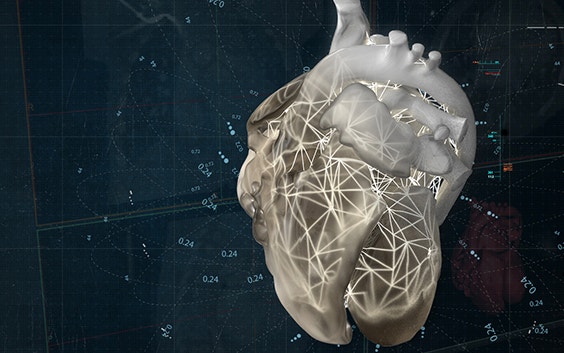EXPERT INSIGHT
8 New Rules of the Medical Device Regulation for Point-of-Care Facilities

As of May 26, 2021, the new Medical Device Regulation (MDR) will be fully applicable. But what does that mean for your hospital, and what rules do you need to follow? We’ve put together a brief overview of the eight key rules in article 5.5 that you need to know.
The most notable change brought about by these new rules is that health institutions will need a quality management system (QMS) in their 3D printing labs. A detailed QMS provides a structured framework that can help hospitals optimize the quality of patient care, reduce mistakes in the production process, and increase the credibility of point-of-care 3D printing labs.
With vast experience as a device manufacturer meeting all necessary requirements while operating within a regulated QMS, it’s one area that Materialise is very familiar with. But what about the other MDR requirements?
1. Print and use medical devices within the same legal entity
The new Medical Device Regulation states that all 3D-printed medical devices must be printed and used within the same legal entity.
2. Appropriate quality management system (QMS)
As mentioned earlier, all Point-of-Care 3D printing facilities must manufacture and use devices under an appropriate quality management system. This system aims to document and facilitate the implementation of important processes, reduce mistakes, and ensure quality and safety.
3. Justification for 3D printing in-house rather than purchasing
Hospitals must justify why devices are 3D printed in-house rather than purchased based on patients' specific needs. Examples of such justification could include lead time, accessibility, or flexibility on the device's design.
4. Information to be available upon request
All information needs to be available to competent authorities upon request.
5. Publicly declare key information
Publicly declared information includes the following:
- The name and adress of the manufacturing health institution
- The details necessary to identify the devices
- That the devices meet the general safety and performance requirements set out in Annex 1 of the Regulation, and, if necessary, explain which are not fully satisfied and why.
6. Documentation requirements
Documentation is required that clearly explains:
- That the general safety and performance requirements are met
- The manufacturing facility and process
- The design, intended purpose, and performance data of the devices
7. Proof in relation to manufacturing
3D printing facilities must ensure and prove that 3D-printed devices are manufactured in accordance with the documentation referred to in point 6.
8. Review process
Review post-manufacturing data gained from clinical use of the devices, including the clinical outcomes, and take all necessary corrective actions. A periodical review process must also exist.
To help you get to grips with the new MDR, we’ve put together a brief overview of the new regulation for point-of-care 3D printing facilities in one infographic. Download your copy or share the link with your colleagues.
Member States may require that health institutions submit any further relevant information about devices that have been manufactured and used on their territory to the competent authority. They also have the right to restrict the manufacture and use of any specific type of such devices and must be permitted access to inspect the health institutions' activities.
This overview is not a comprehensive summary and does not constitute legal advice or a legal opinion on any matter discussed. Expert legal advice should be sought. Please carefully review local laws that may be applicable in your country as well as the Medical Device Regulation to fully understand the legal requirements.
L-101958-01
Share on:
You might also like
Never miss a story like this. Get curated content delivered straight to your inbox.
